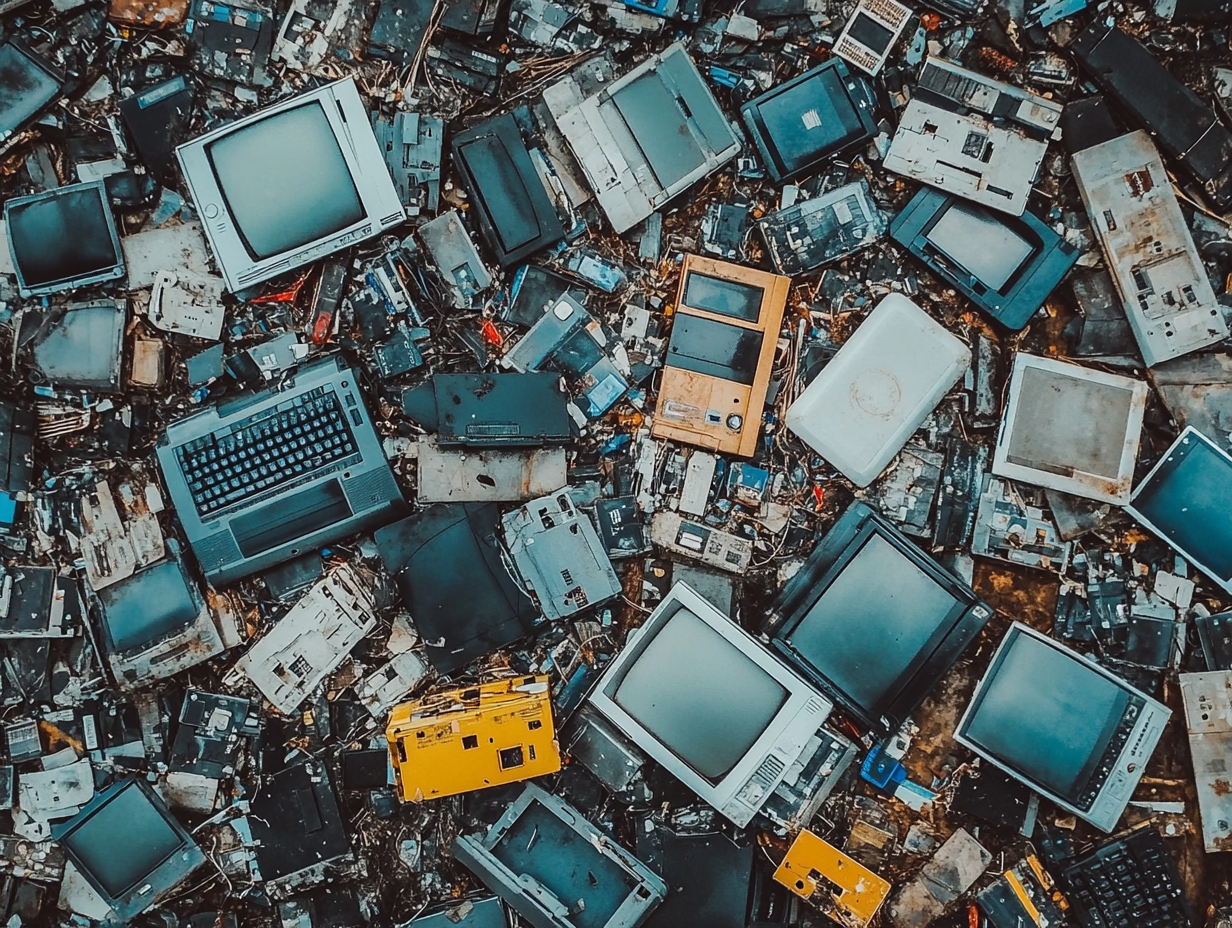【WPMの測定手順】
1. 読む前に設問を確認する
2. 時計(ストップウォッチ)を見ながら、英文を最初から最後まで読み、かかった秒数を記録する
3. 設問に解答する
4. 答え合わせをして正解数を確認する
以下の計算式でWPMを算出する
WPM = 語数 ÷ 読むのにかかった秒数 × 60 × 正解数 ÷ 設問数
※読んだ内容の理解を測定せずただ英文を読むスピードをチェックしたい場合は、WPM = 語数 ÷ 読むのにかかった秒数 × 60 まででOK。
The Global E-Waste Crisis
The United Nations has recently raised alarm about the growing global problem of electronic waste, or “e-waste”. This term refers to discarded electronic devices, including anything with a plug or battery, such as smartphones, laptops, and household appliances.
According to a UN report, the world generated an astonishing 62 million tons of e-waste in 2022. To put this into perspective, this amount could fill over 1.5 million large trucks, forming a line that would encircle the Earth’s equator.
E-waste poses significant environmental and health risks due to toxic substances like lead and mercury found in many electronic components. Developed countries are the primary source of this waste, often exporting it to less developed nations ill-equipped to handle it safely.
The improper disposal of electronics leads to pollution of water bodies and soil contamination. Last year alone, 58 tons of mercury from e-waste entered the environment, potentially affecting the food chain.
The UN criticizes both manufacturers for not taking responsibility for their products’ lifecycle and consumers for the ease of purchasing electronics compared to the difficulty of disposing of them properly.
This issue highlights the urgent need for better e-waste management practices and increased awareness of responsible consumption. Experts suggest that implementing stricter regulations on electronic production and disposal, promoting recycling initiatives, and educating consumers about the importance of proper e-waste disposal could help mitigate this growing environmental crisis. (228 words)
☆Answer the questions☆
(1) What does the term “e-waste” refer to?
a) Paper waste b) Food waste c) Discarded electronic devices d) Plastic waste
(2) How much e-waste did the world generate in 2022?
a) 6.2 million tons b) 62 million tons c) 620 million tons d) 6.2 billion tons
(3) What toxic substances are mentioned as being found in e-waste?
a) Carbon dioxide and oxygen b) Lead and mercury c) Hydrogen and helium d) Nitrogen and phosphorus
(4) Who does the UN criticize regarding the e-waste problem?
a) Only manufacturers b) Only consumers c) Both manufacturers and consumers d) Neither manufacturers nor consumers

【全訳】
国連は最近、電子廃棄物、つまり「e-waste」の世界的な問題の増大について警鐘を鳴らしています。この用語は、スマートフォン、ラップトップ、家電製品など、プラグやバッテリーを持つすべての廃棄された電子機器を指します。
国連の報告によると、2022年に世界は驚くべき6200万トンのe-wasteを生成しました。これを分かりやすく言うと、この量は150万台以上の大型トラックを満たし、地球の赤道を一周するラインを形成するほどです。
E-wasteは、多くの電子部品に含まれる鉛や水銀などの有毒物質のため、重大な環境リスクと健康リスクをもたらします。先進国がこの廃棄物の主な発生源であり、しばしば安全に処理する設備が整っていない発展途上国に輸出しています。
電子機器の不適切な処分は、水域の汚染や土壌汚染につながります。昨年だけでも、e-wasteから58トンの水銀が環境に放出され、食物連鎖に影響を与える可能性があります。
国連は、製品のライフサイクルに責任を持たない製造業者と、電子機器の購入の容易さに比べて適切な処分が困難であることについて消費者を批判しています。
この問題は、より良いe-waste管理の実践と責任ある消費に対する意識向上の緊急な必要性を浮き彫りにしています。専門家は、電子機器の生産と処分に関するより厳しい規制の実施、リサイクル initiatives の促進、適切なe-waste処分の重要性について消費者を教育することが、この拡大する環境危機を軽減するのに役立つ可能性があると提案しています。
【Answer】
(1) c) Discarded electronic devices
(2) b) 62 million tons
(3) b) Lead and mercury
(4) c) Both manufacturers and consumers
【入試超絶頻出単語】
□ electronic waste (電子廃棄物) □ discard (廃棄する) □ appliance (家電製品) □ generate (生成する) □ perspective (視点) □ equator (赤道)
□ toxic (有毒な) □ substance (物質) □ component (部品) □ dispose (処分する) □ contamination (汚染) □ environment (環境)
□ manufacturer (製造業者) □ consumer (消費者) □ lifecycle (ライフサイクル) □ regulation (規制) □ recycle (リサイクルする) □ initiative (取り組み)







